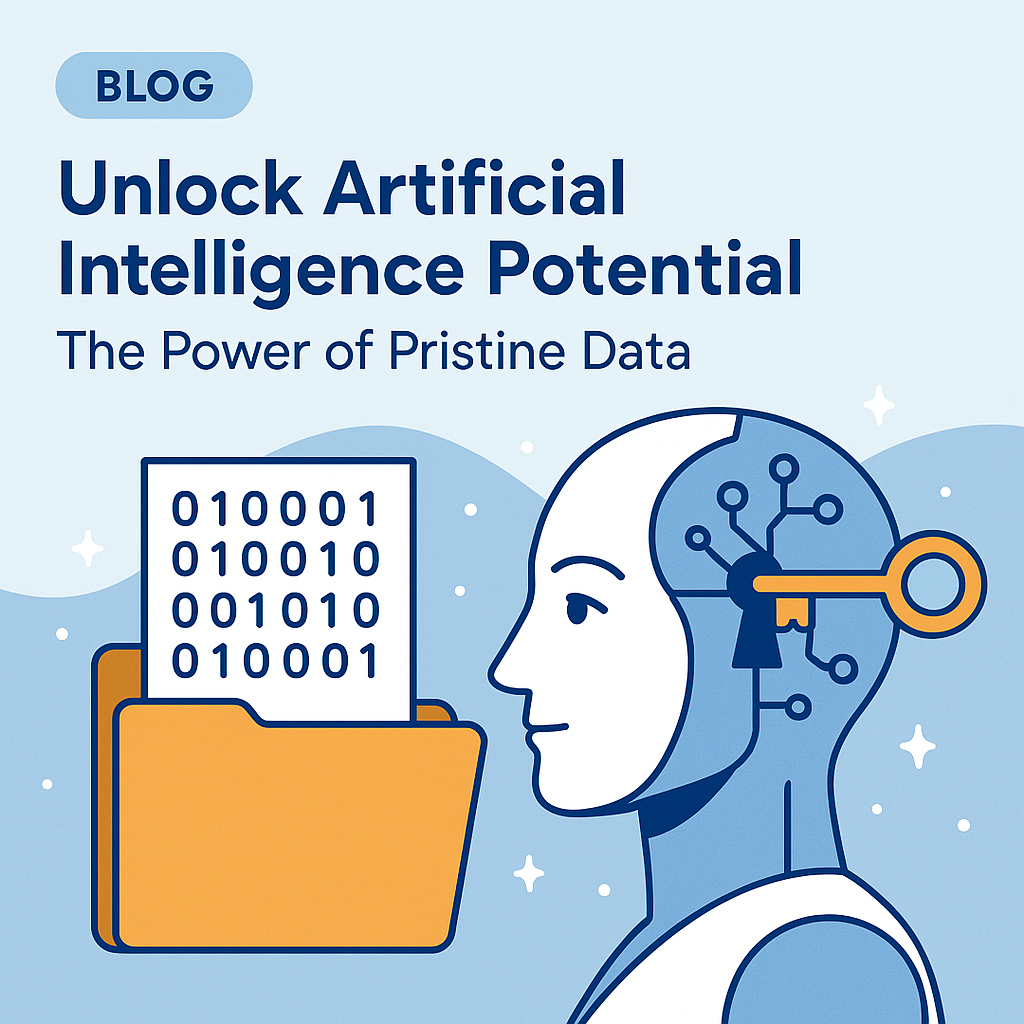Part 5 in the Series: Unlock Artificial Intelligence Potential – The Power Of Pristine Data
The integration of Artificial Intelligence (AI) into cybersecurity has ushered in a new era of sophisticated threat detection, proactive vulnerability assessments, and automated incident response. As organizations increasingly rely on AI to bolster their defenses, the fundamental principle remains that the quality of the data on which they train these advanced systems directly links to their effectiveness. The old saying “garbage in, garbage out” (GIGO) holds true here; technical insights: how data quality issues manifest in AI models.

In Part 4 we covered the data fidelity crisis and some of the dynamics that can create it. Additionally, the consequences of poor data quality extend to the technical performance of AI models, manifesting in several critical ways that can directly impact the effectiveness of cybersecurity defenses.
One common manifestation is the increased rates of false positives and negatives (https://www.drugtargetreview.com/article/152326/part-two-the-impact-of-poor-data-quality/). Noise, inconsistencies, and biases within training data can confuse an AI model. This confused state makes it difficult for an AI engine to accurately distinguish between legitimate and malicious activities. High rates of false positives, where benign events are incorrectly flagged as threats, can overwhelm security teams. This barrage of white noise and alerts can lead to alert fatigue and potentially cause teams to overlook genuine threats (https://www.researchgate.net/publication/387326774_Effect_of_AI_Algorithm_Bias_on_the_Accuracy_of_Cybersecurity_Threat_Detection_AUTHORS). Conversely, high rates of false negatives, where actual attacks go undetected, can leave environments vulnerable and exposed to significant damage.
Another technical issue arising from poor data quality is that of overfitting to noisy data (https://dagshub.com/blog/mastering-duplicate-data-management-in-machine-learning-for-optimal-model-performance/). When AI models are trained on datasets containing a significant amount of irrelevant or misleading data, they can learn to fit the training data too closely, including the noise itself. This results in models that perform very well on the training data. But they fail to generalize effectively to new, unseen data. In the dynamic landscape of cybersecurity, where new threats and attack techniques are constantly emerging, the ability of an AI model to generalize is crucial for its long-term effectiveness.
Indeed, AI models often learn and amplify biases from low-fidelity data. These biases can lead to skewed predictions and discriminatory outcomes. Moreover, attackers who understand the biases inherent in a particular AI model can potentially exploit these weaknesses to their advantage. For example, consider an AI-powered Intrusion Detection System (IDS) primarily trained on network traffic data from large enterprise environments. It might struggle to accurately identify atypical network traffic patterns in smaller environments. This could create a security gap for an organization. Or consider applying that same IDS to a manufacturing network. Here the communication protocols are radically different from the original training source environment. You will not achieve the expected outcome. Data quality issues, therefore, not only affect the overall accuracy of AI models but can also lead to specific, exploitable scenarios that malicious actors can potentially leverage.
Here is a table summarizing some of what was covered in Part 5 of this series:
| Data Quality Issue | Technical Manifestation | Implications for Cybersecurity |
| Noise | Increased false positives and negatives | Alert fatigue, missed threats |
| Incompleteness | Missed threats (false negatives) | Vulnerabilities remain undetected |
| Inconsistency | False positives and negatives | Difficulty in identifying true patterns |
| Bias | Skewed predictions | Discriminatory outcomes, exploitable weaknesses |
| Manipulation | Incorrect classifications | Compromised security posture |
| Outdated Data | Failure to detect new threats | Decisions based on irrelevant information, increased false negatives |
Part 6 will cover best practices for cultivating data hygiene and fidelity in cybersecurity AI training. This next session is critical as a follow up to technical insights: how data quality issues manifest in AI models.